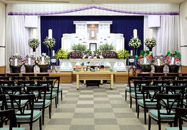EVANS, Craig Steven - Buffalo News
Apr 20, 2019
Evans; loving father of Kahelia C. Evans (Greg) Hoover and Craig S. Evans, Jr.; grandfather of two; brother of Nathan Orlando, Reginald Earl Evans and predeceased by Kevin Evans; also survived by a host of relatives and friends. Wake, 11 AM Friday, March 29, 2019. Funeral, 12 Noon at Mt. Olive Baptist Church, 701 East Delavan Ave. Interment Forest Lawn Cemetery. Arrangements entrusted to ALAN R. CORE FUNERAL HOME, 1933 Kensington Ave.Funeral Home: Alan R. Core Funeral Home, Inc. ...
Celebs, Frick's postmortem paranoia, and more fascinating Pittsburgh history at Homewood Cemetery - The Incline
Apr 20, 2019
The park-like setting has also been an object of fascination for just as long. As reader questions about the cemetery poured in for our Peculiar Pittsburgh series, we decided to host a walking tour at the site with the expert Jennie Benford, the cemetery’s director of programming, to answer some of your queries. This weekend, about 20 Incline readers joined us for a tour. Here are five things we learned. Have questions of your own? Ask us. Rossilynne Culgan / The Incline The land was originally part of Judge William Wilkins’ estate called “Homewood.” Wilkins built a Georgian mansion on the grounds, which were then bucolic forest land. The Homewood Cemetery was founded in 1878 to provide a cemetery for residents of Pittsburgh’s East End. By this time, the Wilkins estate was up for sale and the Cemetery Association purchased 178 acres of it. The name “Homewood Cemetery” is a nod to the Wilkins estate and not the neighborhood, which Wilkins himself founded in 1832. Find the Homewood Cemetery at 1599 South Dallas Ave. in Point Breeze on the Squirrel Hill border. Rossilynne Culgan / The Incline Homewood Cemetery opened as part of America’s rural cemetery movement. The land was originally an oak forest, which was cleared to add nine miles of road and to make space for headstones. It’s called a “lawn park cemetery,” designed so that “wherever you stand, you can see into the distance,” Benford explained. Back then, the idea was to buy one family marker with matching headstones beneath. A 1905 book recommended, “Buy as large a lot as you can possibly afford,” Benford said, adding “you don’t want your neighbors crowding you.” Mausoleums cover a variety of styles, from Victorian to Art Deco to Egyptian. Crosses, sculptures, and angels were seen as tacky in that era, and families preferred headstones with more restraint, Benford said. Epitaphs...



